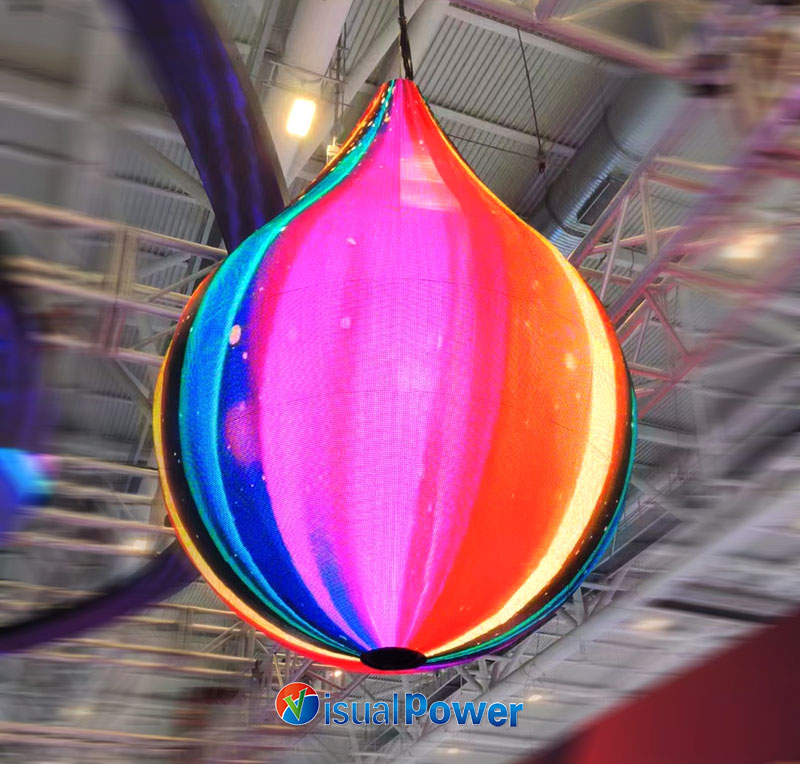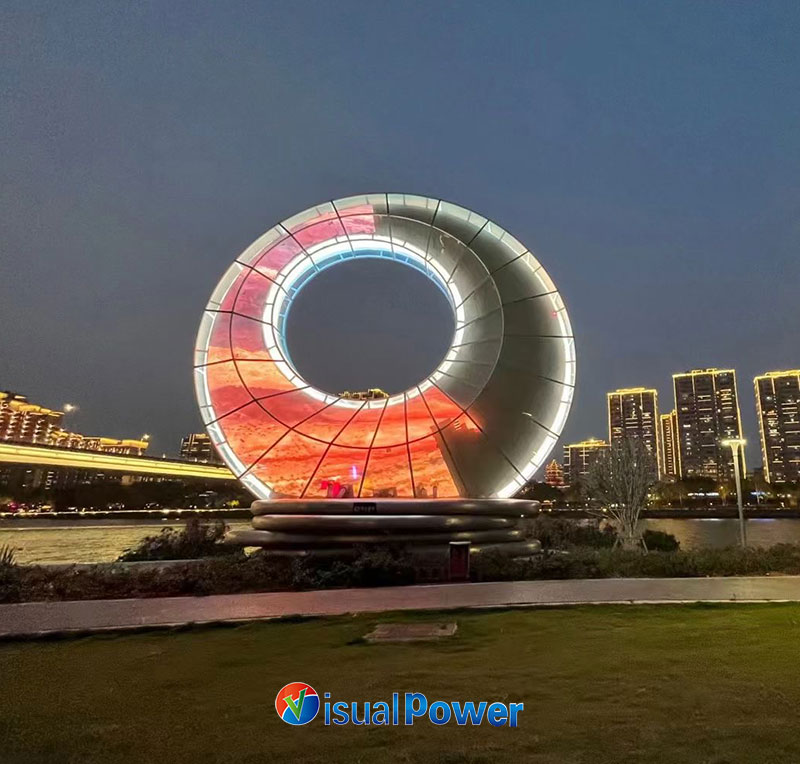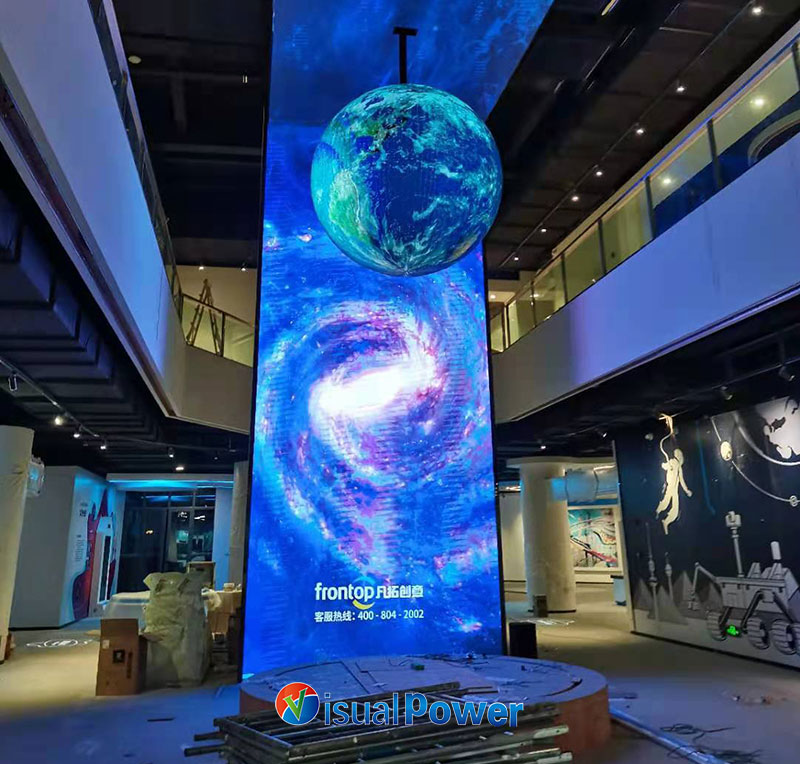Categories
- News (75)
- case study (6)
I have always believed that light and sound are the soul of architecture. They are intangible, yet they can outline the most concrete emotions. And when the LED screen is no longer a square curtain but starts to “grow angles”, twist its body and integrate into the structure, things start to get interesting.
The first time I truly realized the charm of “special-shaped LED display screens” was in a certain art exhibition hall. It is like a dragon woven of light, coiling between the ceiling and the columns, without borders or constraints, as if the building itself is shining.
At that moment, I realized that screens can also have emotions.

Over the years, our use of leds has been taken for granted. When you walk into any shopping mall, exhibition hall or command center, what you see is almost always a “neat” display system. Rectangles, horizontal screens, vertical screens, neatly arranged, as loyal as an army, but also equally – boring.
And the special shape LED display broke all this “sense of security”.
It is no longer decoration but a structural intervention. It can be part of the building – such as the circular screen that fits the dome, the circular belt that wraps the elevator column, or even the zigzag body suspended in the air. Every look is speaking and conveying a certain atmosphere.
I once participated in an exhibition project, which was a “flowing wall”. The visual content surges upward along the irregular wavy side, as if some kind of signal is penetrating reality. That screen is custom-made and each module is cut extremely precisely. The debugging process was extremely painful, but the moment it finally lit up, I almost had an urge to shed tears.

Don’t misunderstand. I’m not praising “romantic shapes”. If you have ever set up an irregular LED display screen by hand, you will know how complex it is.
Every corner and every curved surface require engineers to work day and night to adjust the structure, lay out the wires and supply power. Especially when it comes to the combination of multiple curved arcs, the requirement for the stitching accuracy of the picture can be described as “neurotic at the millimeter level”.
What’s more, the content itself also needs to be redesigned. Not every editor knows how to make a video for a 360-degree circular screen or how to unfold a performance-level animation on a spherical LED.
I have seen clients break down in the middle of a project and shout, “Why not just change it to a square one?” I have also witnessed teams working overtime for three consecutive days to adjust the color difference in one corner. But I have also seen that when the screen integrated with the building was lit up, the client remained silent, just standing there in silence and watching for a long time.
At that moment, no one would doubt its meaning.
Special-shaped leds are not about showing off skills. Its true value lies in the “sense of immersion”.
At the performance site, the spherical hanging screen can provide a visual experience that envelops the audience in all directions. In cultural and tourism Spaces, columnar screens can guide tourists to the next scene. In the command center, the irregularly arranged multi-screen system can instead enhance the readability of data partitions.
I like to regard them as “emotional devices of space”. Because when an LED screen no longer merely displays content but exists before you like a “sculpture of light”, it will evoke a certain instinctive sense of attention and awe – something that traditional screens can never achieve.
Once, during a renovation project of an old church, I watched a screen slowly rotating around the column, casting a visual effect like stained glass. Suddenly, I realized: This was the “painted window” of the new era.
It is not the church that is speaking, but the “light” that is telling the story.

From brand launches to art venues, from high-end retail to city landmarks, I have noticed that an increasing number of projects are no longer content with merely “good-looking content”; they are pursuing “memorable Spaces”.
And the special shape LED display is precisely one of the tools for creating memories.
Unlike traditional advertisements that output in a one-way manner, it is like a “visual poem” that makes people stop, think, take photos and share. Those luminous irregular-shaped panels are no longer merely technological products; they serve as Bridges between information and emotions.
I think that’s why I haven’t left this industry for a long time – because I know that it’s not just about building a screen, but about constructing a brand-new “way of viewing”.